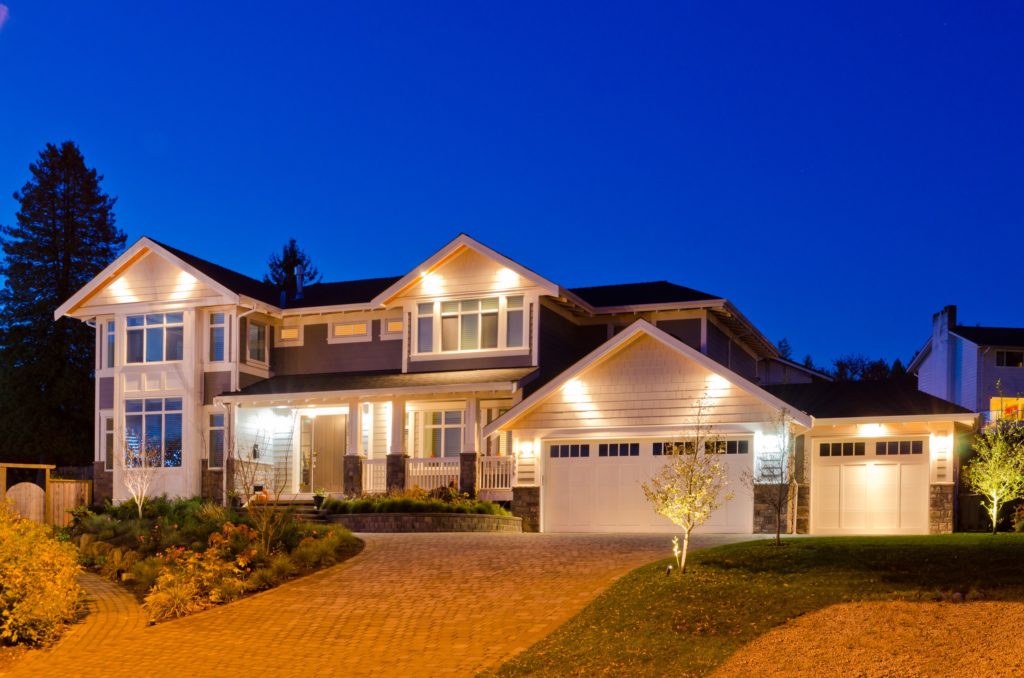
Let There Be Light – All Around Your Property
By: hemant
A manicured lawn, mature plantings, colorful flowers, and a welcoming entry – you’ve finally achieved curb-appeal nirvana. You might even drive by your own home a time or two before pulling into the driveway, just so you can appreciate all the time, sweat, and money your poured into making the exterior of your home Pinterest-worthy.
Still, it’s kind of a shame that once the sun sets, all that beauty is no longer visible. Enter landscape lighting! Strategically layering a variety of landscape lights can add interest, boost safety, and allow you to enjoy your outdoor living spaces well into the night. Here are a few things to consider.

Bulb Type
The type of bulbs used to illuminate an area – inside or out – play a crucial role in the brightness and energy efficiency of your lighting scheme. LED bulbs, the preferred choice, are more expensive upfront but they last much longer and burn much cooler than their incandescent counterparts. Solar lights are another option, though they’re typically not as bright and need at least 6 hours of direct sunlight each day to fully recharge.
Brightness and Color Temperature
The brightness of a light depends on the type of light as well as its power source. A spotlight powered by a 12-volt transformer can produce around 1,500 lumens which is usually enough to light up the front of a house. On the other hand, a garden light produces around 250 lumens making it ideal for illuminating a flower bed.
While brightness determines light strength, its color determines the temperature. Lights range from warm white to daylight, with various options in between. Warm white, with its yellowish undertone, is better suited for a living room, family room, or any space where soft lighting is preferred. Cool white shows off the true color of an object so it’s best suited for practical applications like task lighting, bathroom vanities, and displays. Daylight, as the name implies, best mimics natural sunlight and is often the choice for museums, art galleries, exam rooms, and more.
Where landscape lighting is concerned, the color should help create a warmer, softer look – not that of a large parking lot or football stadium.
Size, Style, and Application
Consider the goal of a particular light when choosing size and style.
- Floodlights are mounted to a home’s eaves and project a wide, bright beam of light, ideal for illuminating a façade, fence, or wall.
- Wash lights also provide a broad beam of light but are mounted near the base of a home and shine upward.
- Bullet or spotlights direct a narrow beam of light to illuminate a specific feature like an aesthetic detail on or inside your home.
- Garden-style lights sit on posts about two feet high. They have a canopy shade that reflects light downward, ideal for gently illuminating flower beds or pathways.
- A downlight is often mounted in a tree or on the side of a home and shines down to create shadows, much like moonlight. A cylindrical shade often surrounds the bulb to eliminate side glare.
- Installed at the base of a tree or home, well lights shine upward to illuminate branches, or the façade of a home if installed near the foundation.
No matter what your lighting needs or desires might be, Excel Electric can help make it happen. We don’t just install – we can help you with the design, recommend placement and bulb types, and much more. Contact us today for a free consultation and lighting proposal.





